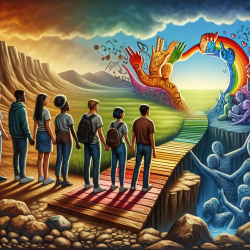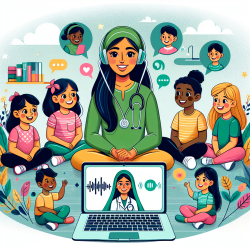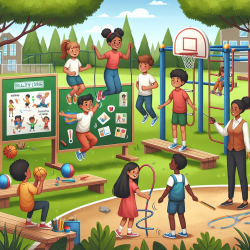Introduction
As educators, we are constantly seeking innovative methods to engage students and foster critical thinking. The research by Letizia (2020) on using graphic novels as pedagogical tools in social studies offers a compelling approach to achieve these goals. This blog explores how educators can harness the power of graphic novels to improve student outcomes, particularly in the realm of citizenship education.
The Power of Graphic Novels
Graphic novels are more than just comic books; they are a dynamic medium that combines visual and textual storytelling. This unique format can captivate students' attention and enhance their understanding of complex concepts. According to Letizia (2020), graphic novels can be particularly effective in teaching social studies by providing a visual context for historical events and social issues.
Implementing Graphic Novels in the Classroom
To effectively integrate graphic novels into your curriculum, consider the following strategies:
- Selection: Choose graphic novels that align with your curriculum and address relevant social studies themes. Works like "Persepolis" by Marjane Satrapi or "March" by John Lewis can provide rich historical and cultural insights.
- Assessment: Use graphic novels as a tool for formative assessment. Encourage students to create their own comics to demonstrate their understanding of key concepts, allowing for creative expression and critical thinking.
- Discussion: Facilitate classroom discussions around the themes and issues presented in graphic novels. This can help students develop empathy and a deeper understanding of diverse perspectives.
Benefits for Students
Integrating graphic novels into the classroom can lead to several positive outcomes:
- Enhanced Engagement: The visual nature of graphic novels can capture students' interest and make learning more enjoyable.
- Improved Literacy Skills: Reading graphic novels can enhance literacy skills by encouraging students to interpret both text and images.
- Critical Thinking: Analyzing the narratives and themes in graphic novels fosters critical thinking and analytical skills.
Encouraging Further Research
While the potential of graphic novels in education is promising, further research is needed to explore their impact on student learning outcomes. Educators are encouraged to conduct action research in their classrooms to assess the effectiveness of graphic novels in promoting citizenship education and critical thinking.
Conclusion
Graphic novels offer a powerful tool for educators seeking to engage students and enhance their understanding of social studies. By implementing these strategies and conducting further research, educators can unlock the full potential of graphic novels in the classroom. To read the original research paper, please follow this link: Conclusion.










